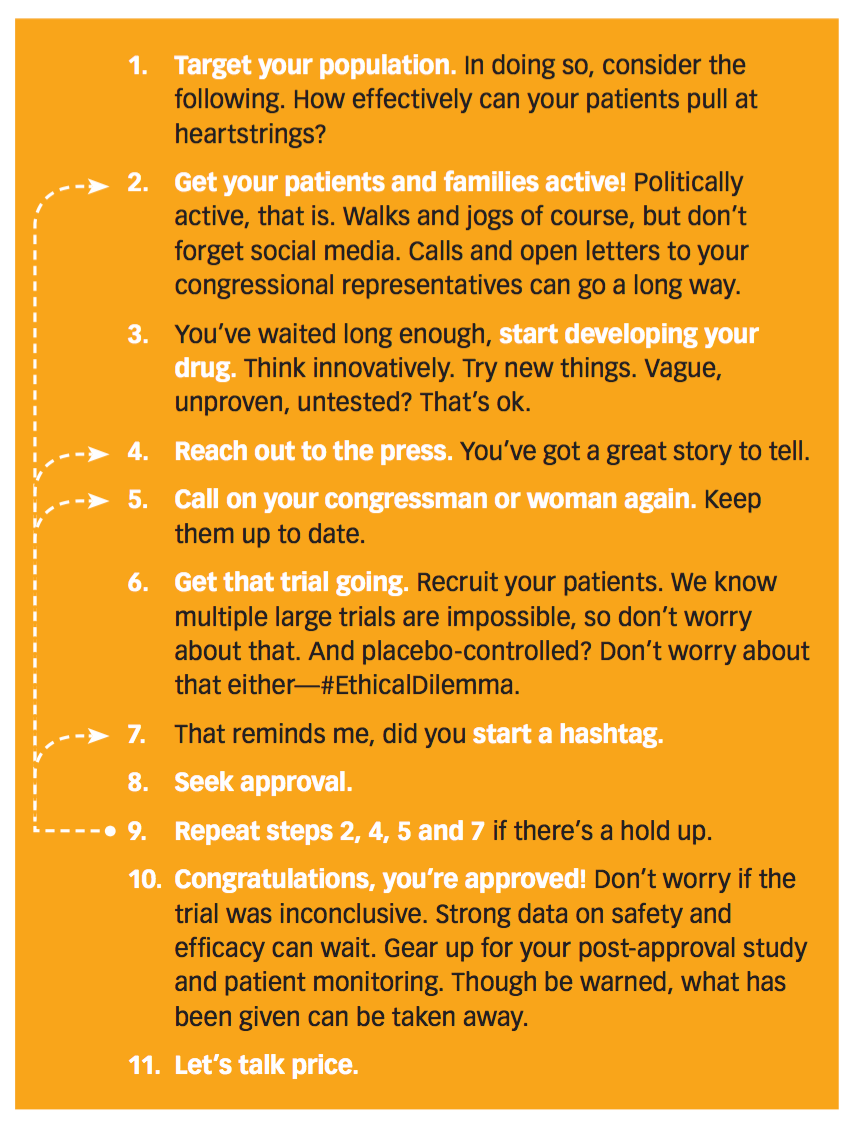Steps Toward Rare Disease Success
Pharmaceutical Executive
When lobbying tips the scales: a path to drug approval.
This month’s National Organization for Rare Disease (NORD) conference should be a hot ticket. Surely laurels will be awarded should members of the Sarepta Therapeutics team be on site. The up and down saga to gain approval for Serepta’s Exondys 51, the first drug cleared to treat Duchenne muscular dystrophy (DMD), will no doubt be top of mind for all in attendance. One thematic element of this complex story hints at a fundamental truth, leaving no question as to why the DMD community hosts its yearly event inside the DC beltway, and holds court in the region year round.
Some see Exondys 51’s approval as a questionable new precedent, deprioritizing efficacy in regulatory decisions. What steps might a new player in the rare disease space want to consider? See one path below ...

FDA is in a tough position any time it has to make a decision as heated as Exondys 51’s approval. The infighting at the agency that has been widely reported is a clear indicator of the seriousness with which it took the mission.
If a precedent has been set, let’s hope it’s for leniency toward conditional approvals that it will be willing to revoke, should post-approval, real-world evidence merit. Removing a drug like Sarepta’s from the market could once again raise intense emotion and require supreme fortitude, especially if another treatment is not yet approved-or close-offering patients hope. Also, let’s hope the decision to approve conditionally properly incentivizes the investment community to continue ventures in promising science in the risky world of rare disease.
None should malign patients, the challenges they face, nor for that matter, healthcare professionals and industry members in their laudable persistence to give them an option. Additionally, it is crucial for decisions about treatment choices to fully weigh the futures such patients face (from their own testimonials), and the fact that they often are fully willing to take burden upon themselves for a chance at a better and/or prolonged life-if not for them, for future sufferers of their affliction.
But given the new demands for greater patient involvement in the process and for real-world data to be counted, how tall a challenge will FDA face to remain credible as a reliable, sometimes calculating, but rational and precise arbiter of science, especially in election seasons? If patients can sway votes, votes may precede science. So don’t forget to write your representative.

Casey McDonald is Pharm Exec’s Senior Editor. He can be reached at casey.mcdonald@ubm.com and on twitter at @mcd_casey

Addressing Disparities in Psoriasis Trials: Takeda's Strategies for Inclusivity in Clinical Research
April 14th 2025LaShell Robinson, Head of Global Feasibility and Trial Equity at Takeda, speaks about the company's strategies to engage patients in underrepresented populations in its phase III psoriasis trials.